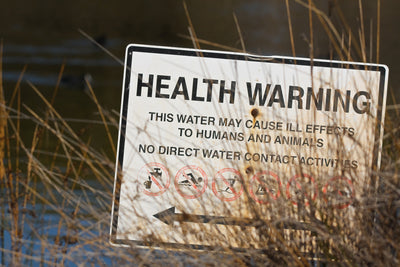Why We Can't Fix The Drinking Water Crisis in the U.S.
RSS
Analies Dyjak, M.A. | Policy Nerd
As communities across the United States continue to deal with contaminated drinking water, the public is beginning to realize that lawmakers might not be the ones standing in the way of regulation. Municipal and public water utility providers are not equipped to deal with new drinking water standards, and have historically lobbied against them.
Why Are Public Water Utilities Against PFAS Regulation?
According to a report by Bloomberg Law, water utilities are the most vocal opponents of PFAS regulation. Regulating PFAS would mean that water utilities would be legally required to reduce PFAS levels to meet state or federal standards. Most of the recently proposed PFAS legislation requires public water utilities to pay for this. Removing PFAS is expensive, and requires treatment equipment that most municipalities do not currently own. A water board or utility provider has the less-than-desirable task of telling the public that because of this, that their taxes are going to increase. They will also be to blame for allowing PFAS and other contaminants in drinking water without notifying the public.
Municipal Water Utilities and the Race Against Time
Municipal water utilities have the most to lose when it comes to new drinking water regulations. When the public retroactively finds out that they’ve been drinking contaminated water for years, municipal water providers take a majority of the blame. This results in a complete loss of trust by an entire tax base. As the public become aware of PFAS in tap water, the number of lawsuits against public utilities will continue to increase. Publicly owned utilities fail when both of these factors come to fruition.
Aging infrastructure is the top priority for most municipal water utilities in the United States. This includes replacing lead-containing pipes, water main leaks, and tackling already difficult-to-remove contaminants like lead, disinfection byproducts, and more. Many municipalities allocate a majority of their resources to replacing lead-containing infrastructure. For example, Newark, New Jersey, is currently in the midst of a $115 million lead service line replacement program. This program doesn’t even remove all lead pipes from the city, just the line that connects to your homes plumbing. The city of Chicago has historically had problems with lead Water commissioner for the city of Chicago estimates that a lead line replacement would cost anywhere between $4 billion and $8 billion. In short, public water utilities are not currently prioritizing PFAS and other contaminants in drinking water.
Who Is To Blame to Water Pollution?
Major companies such as 3M, DuPont, and Chemours took advantage of the lack of water quality regulations for decades. Now that pollution has made its way into drinking water across the United States, it’s time to figure out who pays. Public water utilities are set up to fail. They're underfunded, and given the impossible task of distributing clean drinking water on a tight budget. Additionally, laws such as Superfund/CERCLA, put a large financial burden on municipalities.
Our Take:
More often than not, municipality water departments are not responsible for contaminating the drinking water. Chemical polluters and the Governments lack of proactive lawmaking have allowed tap water to become so contaminated. We believe that municipalities should notify residents as soon as they become of water contamination, whether it's in their best interest of not.
Other Article You Might Enjoy:How Did Hydroviv Filters Perform in a Duke University PFAS Study?
Yale University: PFAS Exposures Increases Risk of Miscarriage
How Do I Know If My Home Has Lead Plumbing?




